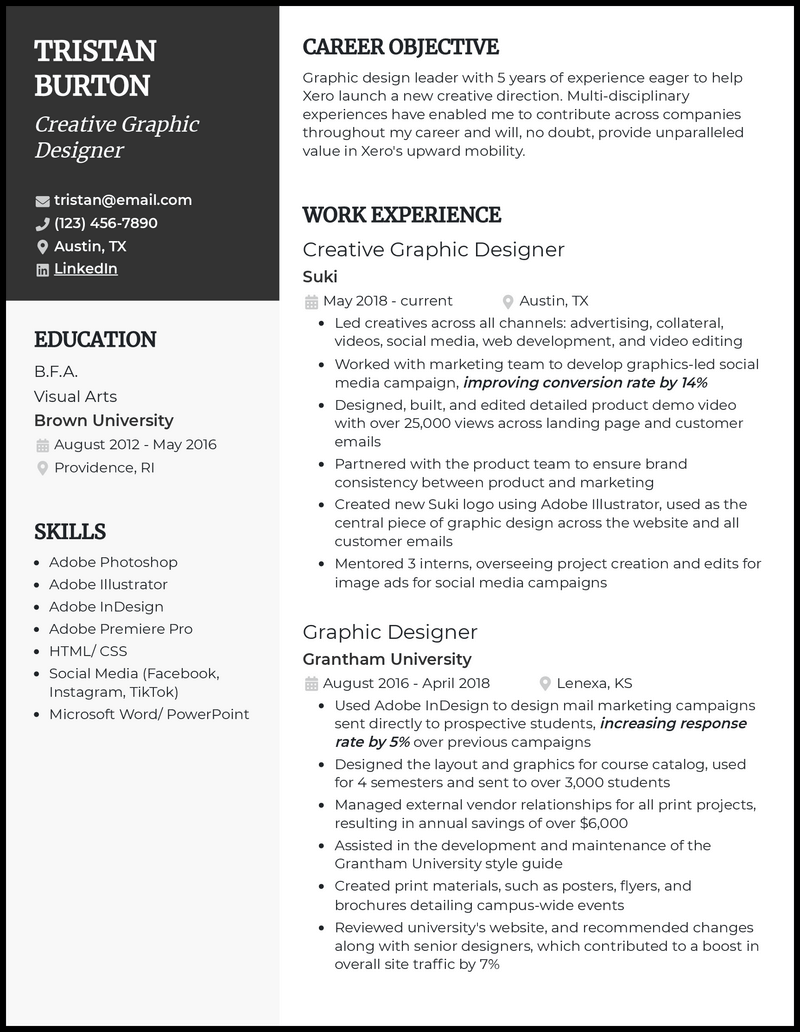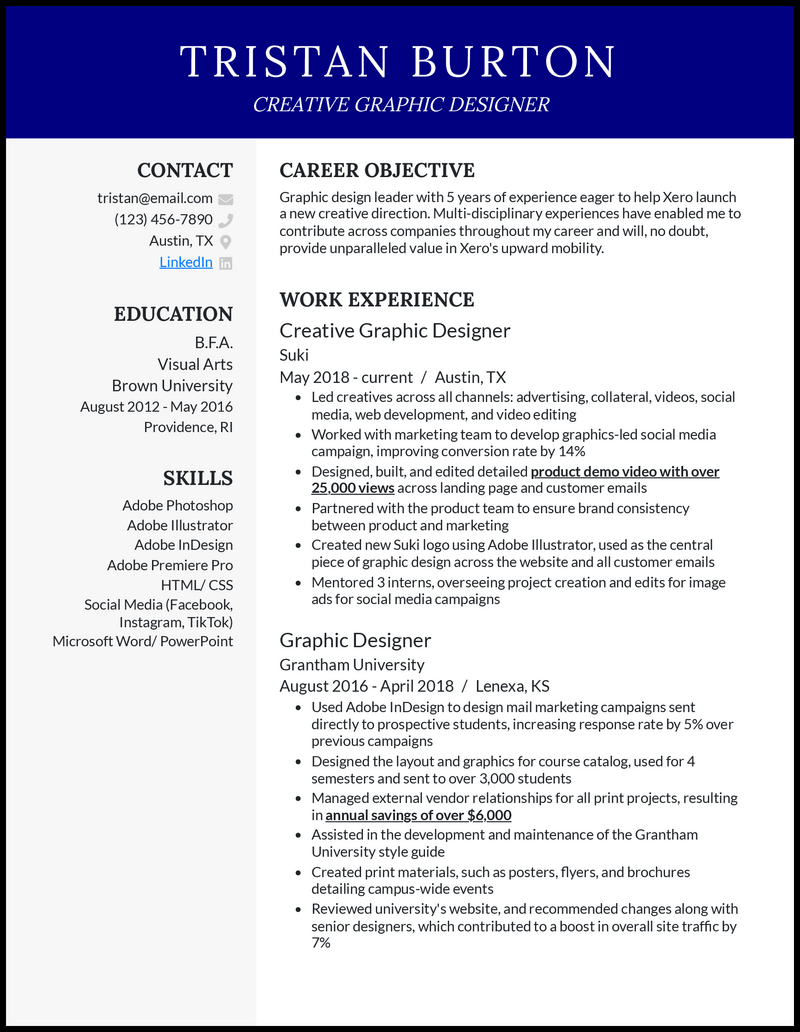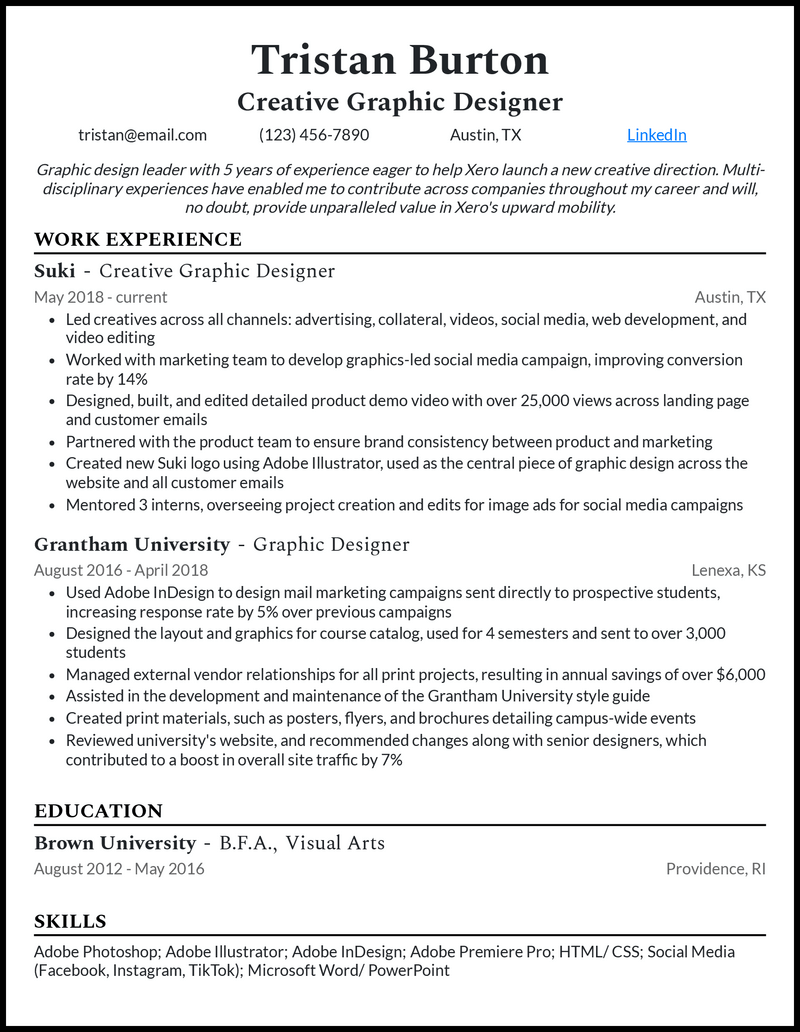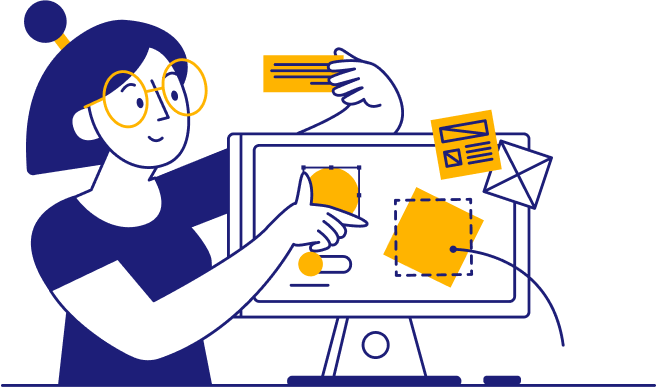Creative designers work with all kinds of mediums: As a creative graphic designer, you create visuals to communicate very specific ideas and messages to your target audience. You might work with digital graphics, or you might create imagery for physical platforms like pamphlets or signage.
But you might still wonder how to make your resume look just as good as your graphics! How long should it be? What should the informational hierarchy look like?
We’ll work together to answer all those questions and more. Try out these three creative graphic designer resume templates and time-tested cover letter writing tips to get started.
What Matters Most: Your Skills & Work History

As a creative graphic designer, you’ll be expected to provide the recruiter who gets your resume with a fine-tuned set of abilities. Each skill you list should relate directly to your field and be as technical as possible.
Niche soft skills down and phrase them in a technical way: Think “active listening” instead of just “collaboration.” Consider how your creative graphic design abilities branch off, and then name particularly intriguing facets of your skill set.
Avoid all things generic, just as you would while designing! List software and content management tools you use by name, too. Here’s what we mean:
9 top creative graphic designer skills
- Adobe Photoshop
- Adobe InDesign
- Hootsuite
- SEMrush
- Adobe Premiere Pro
- HTML/CSS
- Microsoft Word
- Active Listening
- Project Planning
Sample creative graphic designer work experience bullet points
Just as you want your skills to stand out as highly relevant, you want your experiences to sound desirable—so keep all your accomplishments centered around graphic design, even if you’re citing different jobs.
And just like you analyze the data after each design project to make sure it was successful, you’ll need to provide data about your impact. Recruiters want to see results!
Use quantifiable metrics for each of your experience bullet points to prove your efficacy. All your results should come with measurements of their impact, like social media following increases or increased customer acquisition rates.
Here are a few examples:
- Managed external vendor relationships for all print projects, resulting in annual savings of over $6K
- Used Adobe InDesign to create direct mail marketing campaigns for prospective students, increasing response rate by 6% over previous campaigns
- Worked with marketing team’s data to develop graphics-led social media campaign, improving conversion rate by 14%
- Reviewed university’s website, recommending changes that contributed to an overall boost in site traffic by 7%
Top 5 Tips for Your Creative Graphic Designer resume
- Make it look tasteful
- We know: You love colors! But in your resume’s case, less is more since recruiters are far more interested in being able to read through your info quickly. Don’t slow them down, and keep them hooked on how effective your design work is!
- Cut straight to the point
- Also in the interest of readability: Make sure you word your bullet points in a concise manner. Describe ad campaigns and demo materials as vividly as you can, with as few words as you can. Say how you boosted those retention rates, but do it fast!
- Give context
- In your quest for brevity, don’t forget to provide context for your creative graphic design achievements. Quantifiable results are great, but you want your experience section to be intriguing, too.
- Show advancement
- Establish a clear trend of growth throughout your career by providing increasingly complex milestones as you get more recent. Retention rates should get higher, and ad campaigns should get fancier! Formatting your resume in reverse-chronological order will help you show increased ownership and greater success.
- Match the tone
- Think of the graphic designer job description as the voice of your resume target audience. (It is!) Read the job ad again, looking for key phrasing and word choices so you can reflect the right tone in your resume.
Take the same approach here as you did with your writing tone: Revisit the job description. Look for standout tidbits like specific Adobe programs and company values that you’re already familiar with, and reflect those, too.
Most of the time you don’t, but sometimes this can be the perfect way to introduce recruiters to your qualifications and any design niches you have. Just make sure everything you add is new and valuable!
Just one page! Use those awesome designer skills to pick a resume template that arranges all your best-selling points in the perfect hierarchy. Use your single page of space well and lead the reader’s eye where you need it to go.








